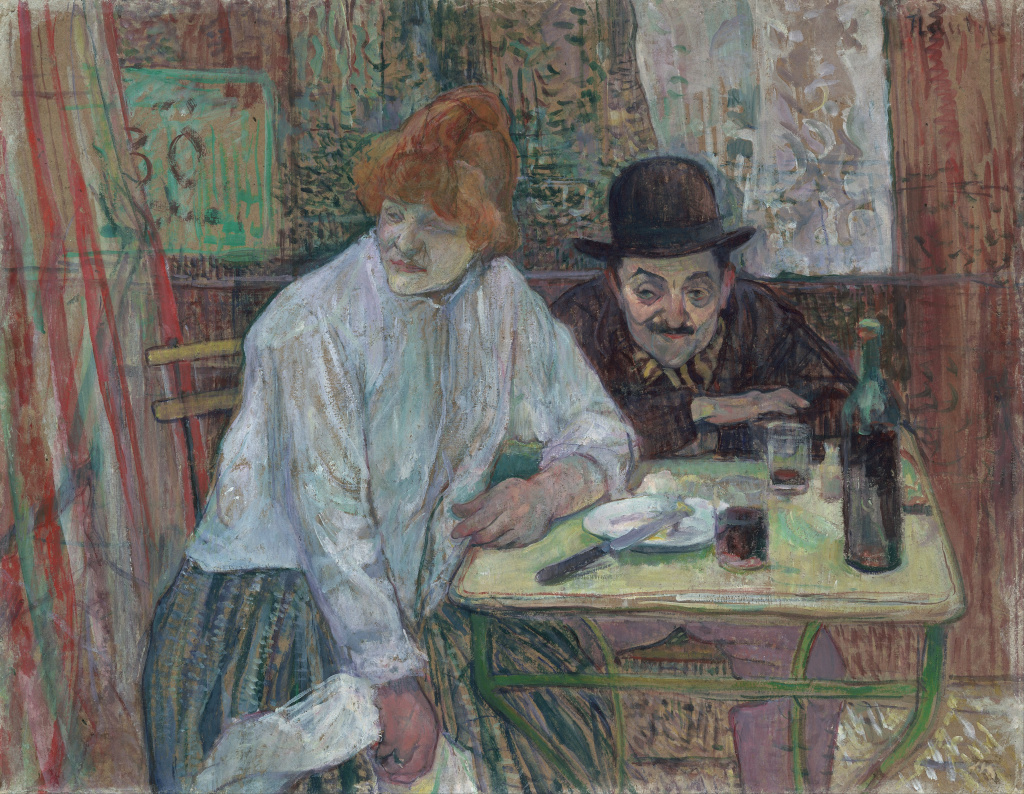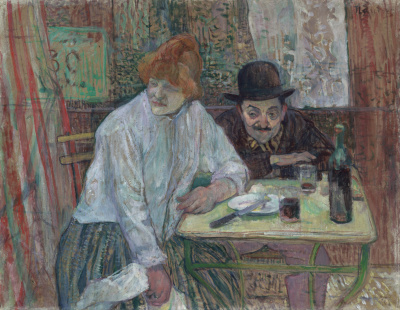This painting was completed by Henri de Toulouse-Lautrec in 1891. It is sometimes known under the alternative title of The Last Crumbs. It resides today within the permanent collection of the Boston Museum of Fine Arts in the US.
We find two interesting figures in front of us here. A middle aged man with bowler hat leans over the table, whilst his companion sits to the side, leaning on one arm. The title of The Last Crumbs refers to the makeup of the table, where most food as been eaten and they are just left with drink. Most likely, this is red wine which they share together in the corner of this local cafe. Behind them is a series of curtains which help to frame the painting and light from a window behind helps to illuminate the content. The artist pays great attention to their clothing, capturing the flourishes of material and individual details of their outfits. The stripey scarf of the gentleman is particularly memorable. The lady's expression is peculiar, as her eyes almost closer, suggesting fatique or perhaps even drunkenness. The gentleman looks a little more alert, but something about him is menacing.
In fact, research carried out into In the Restaurant La Mie has revealed that actually the figure pictured here is the artist's friend, Maurice Guibert. He poses as an untrustworthy character for the purposes of this composition and is joined by possibly a prostitute. The play on words of the title might suggest this to be her occupation, though this has never been confirmed. Something we do know is that the artist was very intrigued by the characters that he came across in these environments and across this decade he would regularly feature scenes such as this. Sometimes he would ask friends to pose in cafes in this manner, but here he specifically asks his friend to act as if anothr. Having spent so much time in the company of actors and dancers, this idea of roleplay would have felt entirely normal to Toulouse Lautrec.
The artist would specialise in scenes such as this once his career had taken off. More famous contributions would include the likes of At the Moulin Rouge, Moulin Rouge: La Goulue and Divan Japonais and despite his relatively short life span, the artist would leave behind a huge body of work which would be added to further by the lithographic prints that would later be produced from his original designs. His oeuvre continues to help us appreciate and learn more about the exciting world of French cafes, with all manner of different characters found within these establishments during the late 19th century. His own lifestyle placed him within this environment frequently and although not good for him in the long term, it did inspire much of his best artistic work.





